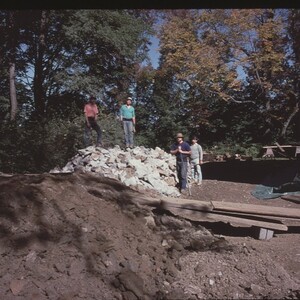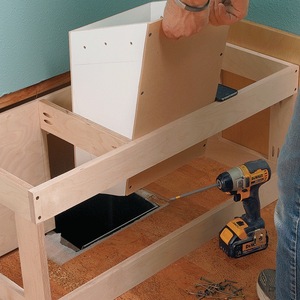Ceiling fan j-box fill/wire arrangement
More a question and questions of what is best (or “Fine”) versus what passes code-
I always try to tuck the wirenuts up into the j-box when installing a fixture. But when installing a ceiling fan today onto a pancake box, there is no way to do so, since even if the box wasn’t nearly completely obstructed by the mounting plate for the fan, the wirenuts are larger than the box depth. Additionally, I had to route the supply wires behind and around a remote transmitter that mounted to the center of the plate. So now, I have the 6 junctions (ground (1), supply to transmitter(2), and transmitter to light/fan (3)) floating in the canopy.
I don’t necessarily think there is anything wrong with that, as far as my reading of code and various other sources. However, I after replacing a few receptacles in the house where the electrician did not pay attention to the wiring when pushing the outlets into the j-box and a few years later side terminals shorted to ground, I have gotten very wary (paranoid?!) about wire arrangement in the box. With the fan, I also worry about vibration. With the remote and 6 connectors, the canopy is crowded, and of course the final configuation is invisible, assuming some movement when you make the final attachment of the fixture.
Is there a better or “Fine” way?


















Replies
It rarely hurts to make a couple of turns with electrical tape at the junction between nut and wire insulation. A few inspectors don't like it, and it shouldn't be necessary in the general case, but in a special case like this it might be wise.
Another option would be the Alumiconn connectors. They make with a setscrew and should be about as impervious to vibration as you can get. Plus they're flat and may fit places where wire nuts don't.
I don't like hanging fans or much of anything else from a pancake box. Very limited space and it is often problematic in the way you describe or other ways.
I don't know if they make one, but a fan-support rated round Wiremold extension box would give you more wiring space to place the splices. If it's up high it doesn't necessarily detract from the appearance of the installation.
Another option is to cut and shape a piece of wood trim, surface mount it to build up the depth and use an Arlington round box extender, "BER", to protect the junction-box integrity.
FWIW..............Ed
Thanks for the replies. I've used a saddle box in cases, but regardless of box size or depth, the mounting plate would have covered most of the box opening. With a lighter fixture or a good assistant, I suppose I could make the connections, tuck them in, and then mount the plate, since I would not need to hang the fan from it.